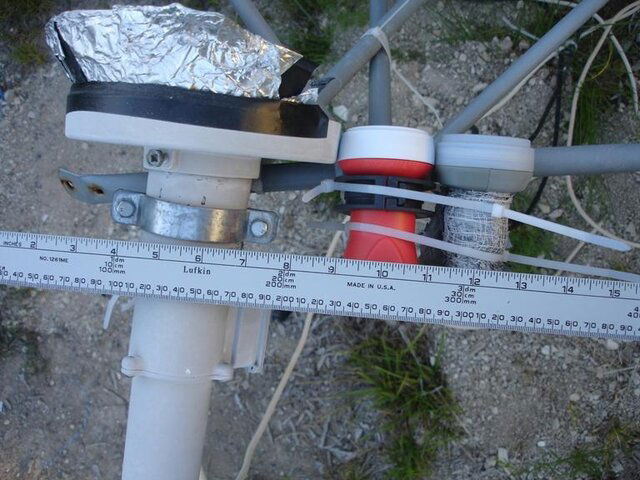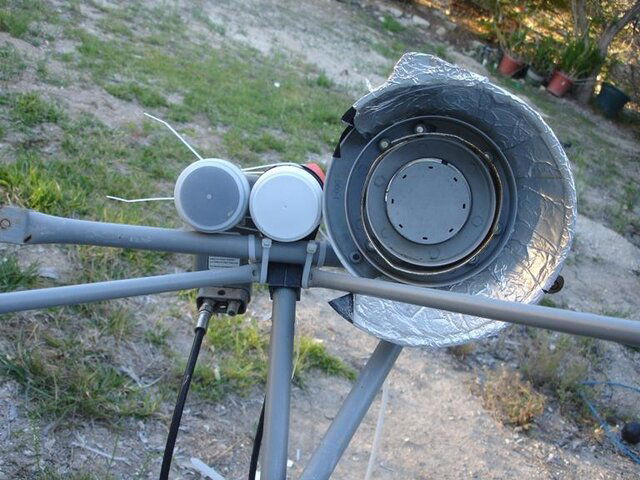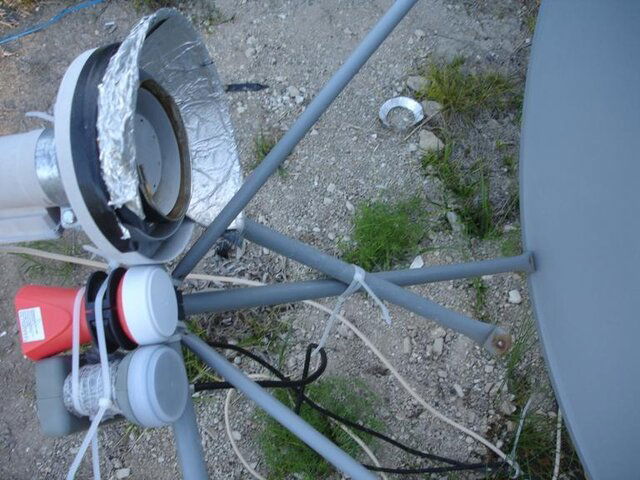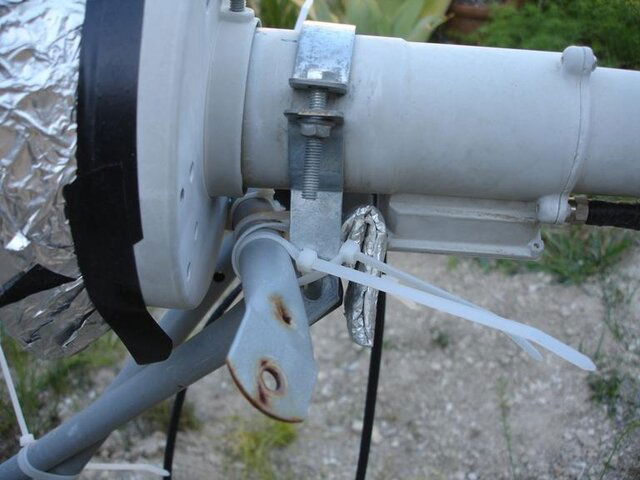RADAR, I already own the DMX741U (I'm yet to set it up), but from all my reading research, it seems you get better reception on both KU and C bands using my proposal in post #1 or am I mistaking?
Edit: When you setup your Minibud, were you able to get high Q values on both C & KU bands. Did you first get the signal on the KU first and then adjust for C-Band or the other way around?
I do not have my system connected for Ku/C mini-Bud right now. I am experimenting with my new AZBox, so I put my Invacom QPH-031 LNBF back on the dish for the interim.
When I had it set up for the Ku/C Mini-Bud I was using the Coolsat 5000 receiver and the BSC621-2 LNBF with a flat scalar ring.
I was able to, with some great effort, pull in most of my linear Ku and several C-Band channels simultaneously with signal levels in the mid to upper 80% quality range. This is extremely tricky on a motorized, offset 1.2 M dish. The focal distance and the positioning of the scalar ring is highly critical. This is indeed better suited for a fixed point dish, but I was able to track both Ku and C Band signals to some extent with good repeatablilty.
I started out with the dish and motor already set up and fine tuned for Ku linear satellites. Then, I removed the Invacom QPH-031 LNBF and installed the BSC621-2 LNBF and started playing. I did not reposition the dish elevation or motor adjustments here.
Allow me to backtrack on this just a moment... At first, I could not install the scalar ring on the BSC LNBF. If you take the assembly instructions of the GeoSat Pro 1.2 M dish literally - even the pictures, you may assemble the dish incorrectly.
The instructions look fairly straight forward and when completed, it seems like the logical manner to assemble it, but it won't work if you try to install a C-Band LNBF with a scalar ring on the mount. The two supporting struts extending from the perimenter of the dish need to attach to the LNBF support arm at the two holes which are about 2" or 3" from the end of the LNBF support arm.
The instructions actually show the two support struts attaching to the very end of the LNBF support arm, right with the LNBF clamp. This seems to be logical as the LNBF clamp has a square opening where it goes over the round LNBF support arm and it will "rock n roll" on the end of the support arm without the two supporting struts bolted to it. Do you envision what I mean by this? How would you keep a square tube clamped straight and steady on a round pipe?
Since I could not attach the C-Band LNBF with the scalar ring with the dish assembled in the manner that I thought was correct, I had to back-track and move the LNBF support arms down to the other bolt holes. This altered my dish elevation slightly. I re-installed the QPH-031 LNBF and fine adjusted my dish elevation to track the entire arc.
I did not find too much difference in my signal quality across the board with this change, and the LNBF mounting bracket, even though it isn't as secure as I think it should be, doesn't seem to pose a problem. Even with the mass of the QPH-031 pulling on it. This could be better remedied, but that will be another topic for discussion.
Ok, sorry for that backtracking, but I thought it was important to include. Now I can install the C-Band LNBF clamp and the LNBF and the scalar ring and I have room for everything.
Now, I used the Coolsat receiver to dial up a linear Ku band sat which also had C-Band transmissions. Walrus1957 had already compiled a channel list for the Coolsat 5K receiver which had C and Ku band sats and channels entered. This was very helpful. Once I was assured that I was aligned to the Ku band sat, I simply switched modes to the C-Band side and Wahoo! The C-Band signals were there. Weak, but present.
Then, I played with the focal distance, the positioning of the scalar ring and the polarization of the LNBF to increase both the C and Ku signals. Not too bad! The results were much better than I had expected.
Motoring to another satellite posed a bit of a problem, however. Now I found that I had to readjust things slightly to peak the signals. I found it very picky and very tricky to compensate for this across the entire arc.
This project is by no means perfect, as you may already have judged, but Walrus has been working on the nitty gritty aspects of this and arrived at some of the best solutions thus far.
Now, to the real question. What about having a dedicated C-Band and a dedicated Ku-Band LNBF installed side by side as opposed to a combination LNBF? Obviously there is a give and take here for both instances.
In a combination LNBF, like the one I have, the C and the Ku band probes are separated by 3-4 inches. I am not certain which ones are furthest back, but this may alter the focal distance and decrease the signal quality.
However, I found only marginal decreases in signal quality from the Ku-Band signals and, although I had nothing else to compare it to, I was pleasantly surprised by the C-Band reception. 80% Q on one or two channels and 66% to 69% on most. Quite acceptable in my opinion and I think I can eventually improve upon this. This will take time, a lot of time.
RADAR







